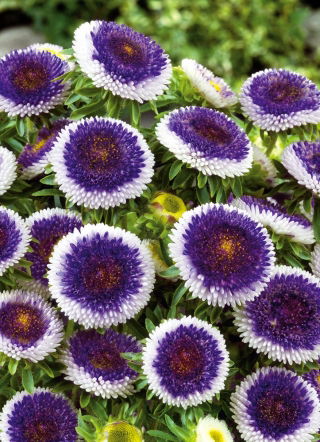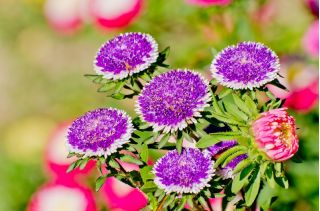- US Dollars ($)
- Euro (€)
- GB Pound (£)
- Chinese Yuan (元)
- Swedish krona (kr)
- Russian ruble (₽)
- Hong Kong dollar (HK$)
- Norwegian krone (kr)
- Indian rupee (₹)
- New Taiwan dollar (NT$)
- Danish krone (kr)
- Hungarian forint (Ft)
- Saudi riyal (SR)
- Bulgarian lev (лв)
- Czech koruna (Kč)
- Israeli shekel (₪)
- Indonesian rupiah (Rp)
- Japanese yen (¥)
- Korean won (₩)
- Malaysian ringgit (RM)
- Romanian leu (leu)
- Swiss franc (Fr.)
- Serbian dinar (din)
- Vietnamese đồng (₫)
- Ukrainian hryvnia (₴)
- Turkish lira (₺)
- Thai baht (฿)
- CAD Dollars ($)
- English
- German - Deutsch
- French - Français
- Spanish - Español
- Italian - Italiano
- Swedish - Svenska
- Russian - Русский
- Norwegian - Norsk
- Danish - Dansk
- Nederlands
- Estonian - Eesti keel
- Finnish - Suomalainen
- Hungarian - Magyar
- Latvian - Latviešu valoda
- Lithuanian - Lietuvių
- Portuguese - Português
- Chinese - 中文
- العربية - Arab-c
- Bulgarian - български
- Czech - Čeština
- Greek - Ελληνικά
- پارسی - Persian
- עברית - Abrit
- Croatian - Hrvatski
- Indonesian - Bahasa Indonesia
- Japan - 日本語
- Korean - 한국어
- Malay - Melayu
- Romanian - Română
- Slovak - Slovák
- Slovenian - Slovenščina
- Serbian - Српски
- Thai - ไทย
- Turkish - Türkçe
- Ukrainian - Українська
- Vietnamese - Tiếng Việt
- Hindi - हिंदी
- Categories
-
Seeds
-
Vegetable Seeds
-
Flower Seeds
-
- Ageratum, Flossflower seeds
- Alyssum seeds
- Amaranth Seeds
- Aquilegia, Columbine seeds
- Aster seeds
- Aubrieta Seeds
- Begonia seeds
- Bellis perennis, Daisy seeds
- Californian Poppy Seeds
- Campanula, Bellflower seeds
- Celosia, Cocksbomb seeds
- Centaurea, Cornflower seeds
- Chrysanthemum, Painted Daisy seeds
- Coleus seeds
- Convolvulus seeds
- Coreopsis seeds
- Cosmos seeds
-
- Datura seeds
- Dianthus, Carnation seeds
- Echinacea, Coneflower seeds
- Flower seed mixtures
- Forget me not seeds
- Foxglove seeds
- Gaillardia Seeds
- Gazania seeds
- Geranium, Pelargonium seeds
- Godetia seeds
- Gourd, Ornamental squash seeds
- Gypsophila, Baby's Breath seeds
- Hollyhock seeds
- Impatiens seeds
- Ipomoea, Morning glory seeds
- Calabash, Bottle Gourd seeds
- Larkspur, Delphinium seeds
-
- Limonium, Statice seeds
- Lobelia seeds
- Lupin, Lupine seeds
- Lychnis, Catchfly seeds
- Mallow Seeds
- Marigold, Tagetes seeds
- Milkweed Seeds
- Nasturtium seeds
- Nemesia seeds
- Nepeta, catmint seeds
- Nicotiana, Ornamental Tobacco seeds
- Nigella, Love in a mist seeds
- Pansy seeds
- Petunia and Surfinia seeds
- Phlox seeds
- Poppy seeds
- Primula, Primrose seeds
-
- Red Valerian, Centranthus Seeds
- Ricinus, Castor bean seeds
- Runner bean seeds
- Safflower seeds
- Salvia, Ornamental sage seeds
- Snapdragon Seeds
- Stock seeds
- Strawflower, Golden everlasting seeds
- Sunflower seeds
- Sweet pea seeds
- Tunbergia, Black-eyed Susan Vine seeds
- Verbascum, Mullein seeds
- Verbena seeds
- Veronica, Speedwell seeds
- Viola, Violet seeds
- Zinnia seeds
-
- Herb Seeds
- Sprouting Seeds
-
Flower Bulbs
-
Garden Equipment
-
At home
- Around home
-
Fertilizers
-
- All-purpose fertilizers
- Autumn and winter fertilizers
- Blueberry fertilizers
- Boxwood fertilizers
- Bulb plants' fertilizers
- Grass and lawn fertilizers
- Citrus plant fertilizers
- Compost
- Conifer fertilizers
- Dolomite and lime fertilizers
- Dry powder fertilizers
- Fertilizers for balcony and terrace plants
- Fertilizers for moss-infected lawns
- Fertilizers in pump sprayers
-
- Fertilizers in watering cans
- Fertilizers sticks
- Fertilizers with leaf shine
- Flowering plant fertilizers
- Fruit fertilizers
- Fruit tree fertilizers
- Garden plant fertilizers
- Gel fertilizers
- Geranium fertilizers
- Green plant fertilizers
- Herb fertilizers
- Home plant fertilizers
- Hydrangea fertilizers
- Lavender fertilizers
-
Aster 'Blue Moon' is a unique annual plant that brings an unparalleled charm to the garden with its delicate blue-violet blooms subtly edged in white. Its bushy form and height of up to 50 cm make it an excellent choice for both flower borders and beds. The elegance and subtlety of this variety also make it an ideal choice for cut flowers, which maintain freshness in a vase for an extended period. Known botanically as Callistephus chinensis, this plant is not only beautiful but also easy to grow, making it a perfect choice for any gardening enthusiast.
Sowing
The seeds of Aster 'Blue Moon' should be sown on well-prepared soil to provide optimal conditions for germination. It is important to distribute the seeds evenly to ensure each young plant has enough space to grow.
Sowing Depth
Seeds should be sown at a depth of approximately 0.5 cm. Such a shallow sowing encourages quick germination and healthy development of young plants. It is crucial to gently press the soil after sowing to increase the seed-to-soil contact.
Direct Sowing Period
When sowing Aster 'Blue Moon' seeds directly into the ground, the best months are April and May. Ensure the risk of frost has passed to provide optimal growing conditions for the young plants.
Sowing Period Under Cover
The ideal time to sow Aster 'Blue Moon' seeds under cover is from March to April. This allows the plants ample time to develop before being transplanted outdoors.
Planting Time
It is best to plant young Aster 'Blue Moon' plants in May when the soil is sufficiently warmed. This timing helps avoid frost damage to the young seedlings.
Plant Spacing
Maintain a spacing of 30x30 cm to ensure each plant has adequate room for growth. This layout allows for free air circulation between plants and minimizes the risk of diseases.
Companion Planting
Aster 'Blue Moon' pairs beautifully with plants that have contrasting colours, such as marigolds or rudbeckias. These combinations enhance the garden's aesthetics and create a harmonious composition.
Site Conditions
Aster 'Blue Moon' prefers sunny locations, though it can tolerate light partial shade. It thrives best in fertile, well-drained, and moderately moist soils. Regular watering, especially during dry periods, promotes abundant flowering. Avoid waterlogged areas, which can lead to root rot.
Growing Tips
Regularly remove faded flowers to encourage the plant to continue blooming. During periods of intense growth, it is advisable to fertilise plants with phosphorus and potassium-rich fertilisers. Occasionally loosening the soil around the plant improves aeration.
Plant Height
Aster 'Blue Moon' reaches a height of up to 50 cm, making it a medium-sized plant ideally suited for the middle parts of borders.
Flowering Period
The plant blooms from August to October, allowing you to enjoy its charming flowers for a long period, even into late autumn.
Usage
Aster 'Blue Moon' is an excellent choice for borders and flower beds, where its delicate flowers add a unique atmosphere. It is also perfect as a cut flower, maintaining freshness in a vase and serving as a beautiful indoor decoration.
Resistance to Diseases
Aster 'Blue Moon' shows good resistance to most fungal diseases, making it easy to grow. Regular inspections and proper care further minimise the risk of potential problems.
Good to Know
Aster 'Blue Moon' is not only beautiful but also a practical plant. Its flowers attract butterflies and other pollinators, supporting garden biodiversity. Regular removal of faded flowers encourages the plant to produce new buds, extending the flowering period.
Why Buy from Garden Seeds Market
By choosing Aster 'Blue Moon' seeds from our store, you are assured of high-quality seed material. Laboratory tests guarantee high germination rates, and satisfied customer reviews confirm the reliability of our products. We provide fast and secure delivery of seeds straight to your home. Garden Seeds Market is a place where passion for plants meets professionalism and dedication, offering premium seeds for every garden enthusiast.
The packet contains 0.5 g of seeds. The packaging includes information on cultivation guidelines and the sow-by date.
New


My account
Store
Customer information
Information

© -2025 Gardenseedsmarket.






